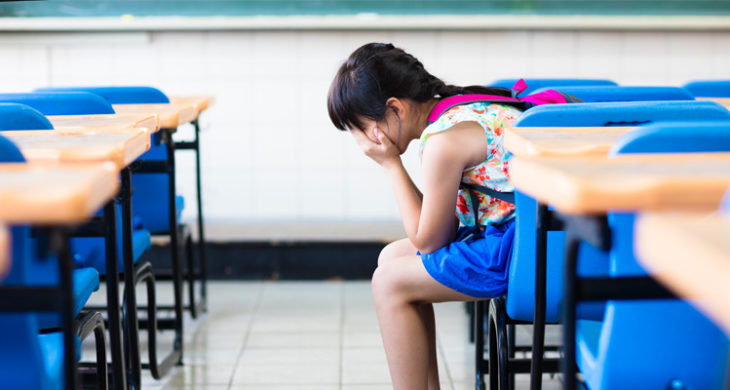School bullying certainly isn’t a new phenomenon. According to at least one new survey, however, it is becoming much more common—or possibly more commonly reported by victims. School bullying can be physical, verbal or psychological and encompasses acts that seek to harm a student physically, socially or emotionally or provoke a student to act in an unhealthy, harmful or violent way. Examples of school bullying include:
- Spreading rumors about a student
- Publicizing embarrassing or private information about a student
- Ridiculing a student and encouraging others to join in
- Ganging up on a student to intimidate them
- Isolating a student
- Stealing a student’s lunch or backpack
- Kicking, hitting, punching or shoving a student
Bullying is so pervasive that the U.S. Department of Health and Human Services has created a website (stopbullying.gov) devoted to the topic. According to the site, bullying adversely affects bullies, bystanders, administrators, classmates, and, obviously, victims.
Victims are more likely to experience a variety of concerning symptoms, including depression, anxiety, feelings of loneliness, changes in eating and sleep habits, loss of interest in activities they used to enjoy, health complaints, lowered academic achievement, and a drop in school participation and attendance. In the worst-case scenarios, bullied students may attempt suicide or retaliate violently (such as turning a weapon on their tormentors).
A Growing Problem
San Francisco-based nonprofit YouthTruth Student Survey queried 160,000 students in 27 states about their experiences with school bullying. One-third of those students reported that they had experienced bullying during the 2017–2018 school year. That number is an increase over previous years’ surveys, in which only one-fourth of students reported being bullied. The survey found that most bullying occurs in person (although data also shows cyberbullying prevalent among middle school and high school students).
Specifics from the Survey
Schools in which most students are white had more reports of bullying than schools in which most students are not white. Even in schools where most students are not white, white students reported higher instances of bullying. In schools where students of color represent the majority, both students of color and white students who reported being bullied overwhelmingly said they believed the reason they were bulled was because of the way they look.
Besides appearance, white students reported they were bullied for sexual orientation and where they’re from. Students of color reported being bullied about family income, religion, and disability. Twenty seven percent of white students and 36 percent of students of color said they believed they were bullied due to their race.
What Can Parents Do?
If you notice changes in your child’s behavior or grades, don’t hesitate to ask them if they’re having trouble with one or more students at school. If you learn of a bullying situation, begin by discussing it with your child’s teacher. If that doesn’t stop the situation, take your concerns to the school’s administrators. Be calm, but explain that you will not tolerate the behavior continuing. Check in with your child daily and offer support. Perhaps discretely ask their friends if the bullying has ended.
Considering the tremendous toll that bullying takes on its victims, drastic measures are sometimes warranted. Increasingly, parents are filing lawsuits claiming school officials didn’t do enough to prevent bullying. Unfortunately, many of these lawsuits come after irreparable harm has already been done. If your child is being bullied and you haven’t been able to make it stop, the best option may be to find a safer environment for your child and switch schools. Virtual schools allow your child to learn from the comfort and security of home while still enjoying a public education and connecting with other students. Visit K12.com to learn more.
,










